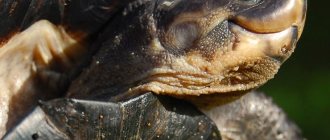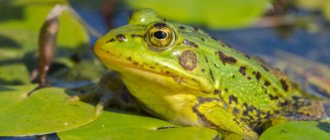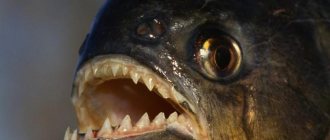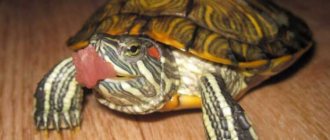Many people are interested in turtles due to the uniqueness of their way of life. One of the varieties of these reptiles is the marsh turtle. This is a wild animal, but if certain conditions are met, it can be made a true friend. It is important to understand what living conditions are optimal for it in the wild - this will help to understand the needs of the animal and ensure their satisfaction.
Description
About 13 subspecies of marsh turtles are known, the appearance of which varies depending on their habitat. In nature, the size of a marsh turtle is 35 cm, at home it is slightly smaller. Emys orbicularis is dark olive to black in color. The plastron is light. The color of the turtle comes with yellow spots on the head, paws and tail. The carapace is smooth, the scutes fit tightly to each other. Claws decompose on the limbs, and membranes form between the fingers. The tail is long up to 12 cm.
Features of behavior
Turtles are awake during the day and sleep at the bottom of the aquarium at night. They love to bask in the sun. If the animal senses danger, it quickly buries itself in the ground. The marsh reptile defends its territory if someone encroaches on it. Shows aggressive behavior while feeding. It can bite and scratch its owner painfully.
Lifespan
There is no consensus on the life expectancy of turtles. The figure varies from 30 to 100 years. With good care, a marsh turtle will live 30–50 years.
Habitats
The marsh turtle is distributed in North-West Africa, in Southern and Central Europe, to Smolensk and Ulyanovsk in the north, in Asia - in the east to the Irgiz River and the lower reaches of the Syrdarya, and in the south - to Iran, Iraq and Asia Minor.
It can be found in forest, forest-steppe and steppe areas. The marsh turtle is quite unpretentious in its choice of habitats and settles in bodies of water with weak currents; also common in lakes and floodplain channels among floodplains.
Prefers reservoirs with sloping banks overgrown with reeds, reeds, cattails and other wetland plants.
Conditions of detention
Monitor the quality and cleanliness of the reservoir. Provide your pet with sunbathing; take adult animals outside into the sun's rays.
Requirements for a terrarium
To keep your pet comfortable you will need:
- wide tank from 120 l;
- thermometer;
- ultraviolet lamp for reptiles (10% UVB);
- incandescent or metal halide lamp;
- powerful filter.
Set aside a third of the aquarium for an island. Decorations of your choice: driftwood, artificial plants and shelters.
Wet zone
The water level for small individuals is up to 10 cm, for adult turtles - 15–25 cm, so that it can swim. Monitor the purity of the water. The filter must provide high-quality filtration. Remove contaminants in a timely manner, change the water 25% every two weeks. If the filter is not powerful enough, change 50% of the water every two days. Place large soil so that the turtle does not swallow it. Make sure that the substrate is natural, uncolored. The animal does not tolerate chemical dyes well.
Land zone
If you keep a European turtle in a special aquaterrarium, the land zone is already equipped. In a simple aquarium, make an island of sushi out of stones. Place the lighting 20 cm from the land to avoid burning your pet. Create 12 hours of daylight. Turn on the UV lamp for 7–15 minutes a day to ensure your pet absorbs calcium and prevent skeletal deformation.
Behavior
These reptiles are active during the day and sleep at night. To sleep, they go down to the bottom of the reservoir in which they live. During the day they prefer dry land to warm themselves. They are capable of moving several kilometers away from a body of water. They cannot stay in the water all the time - they need air to breathe, so the animals often float to the surface. They can survive without oxygen for about two hours. With low activity, the need for it disappears completely, since anaerobic respiration is activated.
These turtles swim well and quickly. When a threat is detected, they tend to hide in the grass or coastal mud. On land, the reptile also moves quite quickly.
Care
Caring for a marsh turtle is not difficult, the main thing is to recreate natural conditions. Maintain the aquaterrarium in a timely manner, monitor the diet and temperature, monitor your pet, and if you suspect an illness, do not delay treatment, then the marsh turtle will live a long time.
Stern
Unlike land turtles, European marsh turtles are predators. Feed your pet a variety of foods:
- lean fish (haddock, pollock, cod, perch);
- small snails and crustaceans;
- earthworms;
- bloodworm;
- mussels;
- shrimp;
- baby frogs;
- live aquarium fish;
- branded food.
Protein foods are the basis of the diet. Serve moist food at room temperature. Vegetable feeding is also required (15% of the diet):
- dandelion leaves;
- salad;
- spinach;
- non-acidic fruits;
- carrot;
- duckweed.
While feeding, the reptile scatters pieces of food and quickly pollutes the water. To keep the water clean, feed the animal in a different container. Give food to young individuals and pregnant females every day, to adults - once every 2-3 days. Unlike land turtles, European marsh turtles are easy to train. Feed with tweezers, pets will stretch their heads to take food. Hand feeding is not advisable, as later the animal associates hands with eating, which makes independent feeding difficult. Nutrition occurs in water.
Hygiene
It is enough to wipe the shell of a swamp reptile with a soft sponge or brush without soap once a week. Use warm water. If the turtle is not in the mood, wait for the right moment.
Age determination
Find out the age of the reptile by the rings on the scutes of the shell. During the first two years of life, the growth ring appears within 3–6 months. After this, one ring is added annually. The pattern of an elderly marsh turtle is unclear. You can also find out the approximate age of a reptile by the length of its shell. In newborns, the length of the shell is up to 3 cm; every year the shell becomes 2 cm longer. By one year, the reptile has a 5-centimeter shell, while a two-year-old turtle has 7 cm.
Nutrition
It has already been mentioned that the turtle is very agile in water. Catches worms and insects, frogs and fish, and first bites off the swim bladder of the latter. Then he throws it out, and it remains floating on the water. This way you can understand whether turtles live in a pond or river.
If you see fish bubbles on the surface of the water, you can be sure that there is an emida there. Previously it was believed that she was a night hunter. However, the reptile just rests at night, falling asleep at the bottom of the reservoir. And early in the morning he goes hunting, and does this all day, with the exception of short breaks.
She does not refuse mollusks, crustaceans, dragonflies and mosquito larvae. In the steppes it catches locusts, in the forest - centipedes and beetles. Attacks small vertebrates, small snakes and waterfowl chicks. She does not disdain carrion, eating the corpses of small animals and birds.
So fish is not her main dish. Priority is given to “meat” products. Therefore, fears that marsh turtles are damaging fish ponds by catching all the fish are incorrect. Observations showed that most of the emida's attempts to hunt healthy fish failed, and the prey managed to elude the hunter.
Of course, if our reptile found itself in places with large concentrations of these aquatic inhabitants, then the likelihood of a successful attack increased. In the fauna, the turtle plays an important role as an orderly for its native reservoir, as it destroys carrion, and also as a breeder, since it can selectively catch only weak and sick individuals.
With the caught prey, she goes to the depths and deals with it there. It tears large pieces into pieces using powerful jaws and sharp claws. Plants are not a priority on the menu. She can chew algae and the juicy pulp of other plants, but this is rather an addition to the main “meat” diet.
Reproduction
Prepare a shallow container of sand or sphagnum moss for the female to lay her eggs. If the container is not large enough, place the female overnight in a separate box with a thick layer of soil. During one mating season, the reptile creates up to 3 clutches of 5–12 eggs. Place the clutch in an incubator with a temperature of 24–30 degrees and a humidity of 80–90%. At an incubation temperature of 27 degrees and below, males appear, and at 30 degrees, females appear. At unstable temperatures, females and males are formed.
After 2–3 months, the turtles hatch. The color of newborns is dark with yellowish lines and spots. For some time, the offspring does not leave their shelter, feeding on the contents of the yolk sacs. Feed the juveniles:
- insect larvae;
- Daphnia;
- small bloodworms;
- branded food for turtles.
Gradually add crushed adult turtle food to the diet. In a terrarium with turtles, the depth of the reservoir is no more than 5 cm. Observe the water and air parameters. Avoid noise, sudden movements and other sources of stress. Do not handle baby turtles unless necessary. It is better not to take domestic animals into nature due to their greater vulnerability to disease.
View this post on Instagram
Kindergarten? #turtles #marsh turtle #reptile #emysorbicularisorbicularis #turtles #reptilesofinstagram
A post shared by Turtle Help Team, Moscow (@pitomnic_shirley_foxs) on Sep 16, 2021 at 1:02pm PDT
Sexual behavior
Sexual maturity occurs at the age of 6–8 years, when the shell grows to 10 cm. Determine the sex of the swamp reptile based on the following characteristics:
- females have yellow eyes, males have reddish ones;
- males have a concave plastron;
- The tail of males is longer and larger.
Males show attention to females by touching their muzzles and paws with their noses. Their behavior can be persistent. Turtles can mate in water and on land. During pregnancy, feed the female high-quality food with added vitamins. Calcium in the diet should be 2-3 times more than in a normal diet. Keep males and females separate from each other. 2–3 months before laying, turtles stop eating. Shortly before breeding, females become restless, try to crawl out of the aquarium and dig in the soil.
Interesting Facts
- Turtles are afraid of surprises and always try to hide from them in the saving water element, sometimes even at the risk of their lives. In the Caucasus, turtles were seen jumping from a three-meter height into the water out of fear.
- Turtles have a sensitive sense of smell. They quickly found pieces of meat wrapped in paper in the water.
- The male's sperm is stored for a very long time; it can be kept in the female's genital tract for about a year or more. Therefore, an emida may unexpectedly lay eggs after six or more months of captivity. Don’t be surprised, this is not a miracle, the fertilization trigger just worked.
- In 2013, at the Zoological Museum of the Dnepropetrovsk Agrarian University, several marsh turtles hatched from eggs stored on shelves as exhibits. How they survived in such unimaginable conditions for incubation is unclear. This event really looks like a small miracle.
- It is interesting that in turtles, sex separation depends on the ambient temperature - if incubation takes place at temperatures above +30º C, only “girls” emerge from the eggs, and below +27º C – only “boys”. In the interval between these figures there is a balance between the sexes.
- In the Middle Ages in Europe, turtles were considered a delicacy and were often used as food. The church considered their meat lean, like fish.
- There are monuments to the marsh turtle in Latvia. In the city of Daugavpils, sculptor Ivo Folkmanis built a monument from light African granite in 2009, after a year of work. And in Jurmala, a bronze sculpture on the seashore has been standing for more than 20 years, since 1995. Both figures are created in honor of the large population of these turtles in the country.
Appeal
The decline in population numbers is associated with human activity: pollution and the settlement of new territories. Measures to protect numbers are constantly being tightened. Ignorant people cause enormous damage to nature by taking turtles home and creating unsuitable conditions for them. Reptiles are kept in an unequipped aquarium or basin. Such treatment provokes the appearance of diseases and death of the animal. A turtle found in the wild should not be taken home. When you see an animal, do not touch it. If you know how to handle a swamp reptile, you can take it to the nearest body of water. Temporary care at home is needed for injured and sick turtles.
Features of hibernation
Under natural conditions, with the onset of cold weather, these freshwater animals spend the winter, namely, hibernate. In winter, sleep is a necessary condition for these animals. The fact is that they are cold-blooded species; for this reason, in cold times they cannot monitor the level of their body temperature.
They can also hibernate at home, but their sleep usually does not last long. This is due to the fact that the necessary microclimate conditions are always observed in the aquarium. Some opponents of turtle hibernation explain this by saying that the preparatory process for wintering takes too much time and effort.
Diseases
Swamp reptiles rarely get sick, but prolonged stay in unsuitable conditions and improper feeding provoke:
- Colds and pneumonia. Occurs in the absence of heating. Treated with antibiotics according to doctor's instructions.
- Cracked skin, inflammation of the eyes. They are found in marsh turtles in conditions of poor aquarium hygiene. When the first signs appear, wash the turtle in clean water, as well as the decorations, aquarium walls and soil. Fill the reservoir with water and turn on the ultraviolet lamp for 15 minutes. Improve your pet's condition after treatment and contact your veterinarian for treatment.
- Rickets. Accompanied by deformation of the shell. Advanced disease causes pulmonary edema and heart failure.
- Injuries. A lack of calcium makes the animal susceptible to injury.
- Helminthiasis. Parasites are introduced with live food. Contact your veterinarian or consult about medications and dosages on special forums.
How to care for and maintain hygiene of reptiles
First of all, you need to take care of the cleanliness of the water in the tank. Turtles are not the cleanest creatures, they love to eat sloppily in the water and leave a large amount of waste products in it.
The water quickly becomes dirty and cloudy, its flora is pathogenic, putrefactive, and when living in it, reptiles often get sick. Most often, turtles develop eye and skin diseases. To avoid such difficulties, you should equip the aquaterrarium with a powerful and effective filter, which has a large volume and creates a weak current.
To make the process of cleaning the tank as easy as possible and not cause much trouble, you can reduce the amount of decor and reduce the thickness of the soil material under water.
Adviсe
- If you need to pick up your pet, grab it by the back of its shell. Then the animal will not reach and bite.
- Do not allow small children to play with the animal.
- Buy food from trusted places to avoid introducing parasites into the terrarium. Treat some feedstuffs with methylene blue. Freezing also kills protozoa.
- Do not stock the swamp reptile with representatives of other species. The inhabitants of the swamps are aggressive, such a neighborhood will result in injuries and stress.
The European marsh turtle is confused with the American marsh turtle. The species have similar characteristics. The American Swamp has the same black carapace with yellow dots, the same size and habits. Both species are listed in the Red Book. Previously, the species belonged to the same genus Emys. The species were separated when differences in skeletal structure were discovered.
Previous
Inhabitants Bright aquarium crayfish: contents and types
Next
InhabitantsHow to get a grape snail at home
Turtles in their natural environment
The habitat of European marsh turtles is quite wide; they are found in the south, central and eastern regions of Europe, the Caucasus and Asia. Most of the population lives in almost all states that left the Soviet Union.
It is surprising that thanks to research it was possible to find out that representatives of this species were found throughout most of Europe even before the Ice Age. In addition, in some areas, to this day there are residual populations of these reptiles, which are classified as relict.











